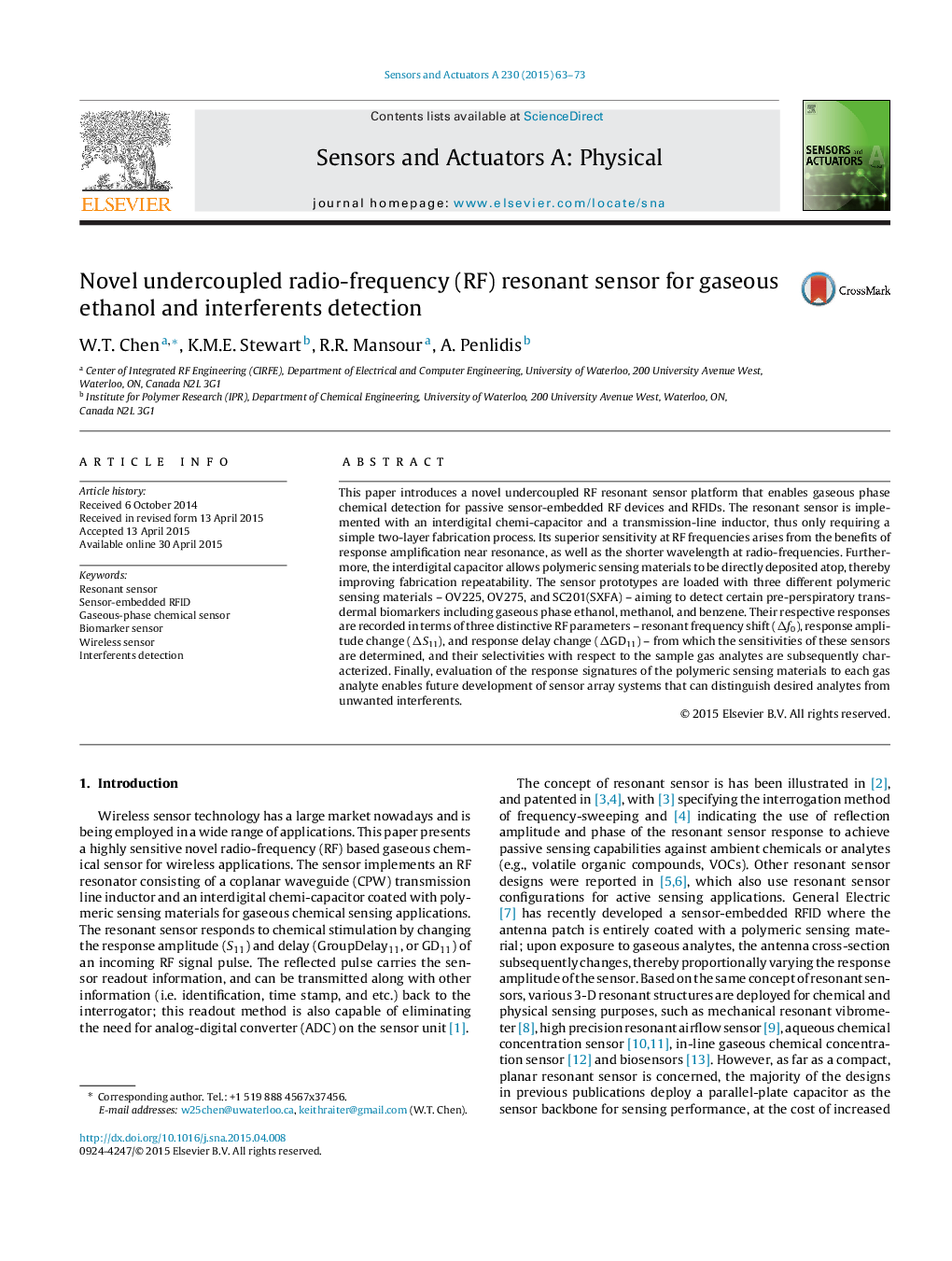| کد مقاله | کد نشریه | سال انتشار | مقاله انگلیسی | نسخه تمام متن |
|---|---|---|---|---|
| 736922 | 1461870 | 2015 | 11 صفحه PDF | دانلود رایگان |
• An undercoupled chemi-capacitive RF resonant sensor was found to be highly sensitive against ambient analytes.
• The RF undercoupling effect on a resonant sensor further amplifies the variation in response amplitude and delay.
• Interdigital chemi-capacitive sensor is a superior sensing component for RF resonant sensor for its high performance and ease of fabrication.
• The response signatures of the three common epidermal gas analytes on the selectedsiloxane sensing materials were successfully captured.
This paper introduces a novel undercoupled RF resonant sensor platform that enables gaseous phase chemical detection for passive sensor-embedded RF devices and RFIDs. The resonant sensor is implemented with an interdigital chemi-capacitor and a transmission-line inductor, thus only requiring a simple two-layer fabrication process. Its superior sensitivity at RF frequencies arises from the benefits of response amplification near resonance, as well as the shorter wavelength at radio-frequencies. Furthermore, the interdigital capacitor allows polymeric sensing materials to be directly deposited atop, thereby improving fabrication repeatability. The sensor prototypes are loaded with three different polymeric sensing materials – OV225, OV275, and SC201(SXFA) – aiming to detect certain pre-perspiratory transdermal biomarkers including gaseous phase ethanol, methanol, and benzene. Their respective responses are recorded in terms of three distinctive RF parameters – resonant frequency shift (Δf0), response amplitude change (ΔS11), and response delay change (ΔGD11) – from which the sensitivities of these sensors are determined, and their selectivities with respect to the sample gas analytes are subsequently characterized. Finally, evaluation of the response signatures of the polymeric sensing materials to each gas analyte enables future development of sensor array systems that can distinguish desired analytes from unwanted interferents.
Journal: Sensors and Actuators A: Physical - Volume 230, 1 July 2015, Pages 63–73
